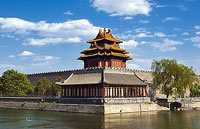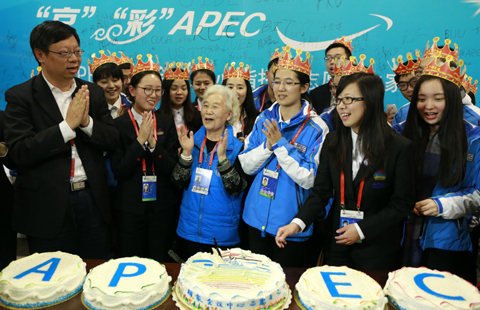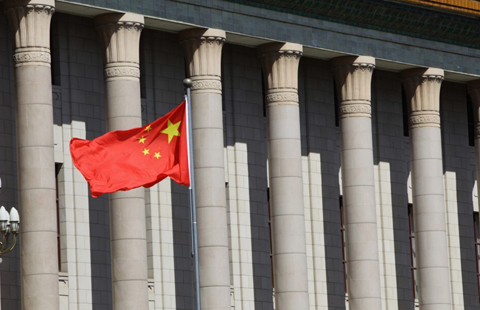FTAAP top priority for APEC Leaders' Meeting
Updated: 2014-11-07 18:09
By Zhang Xiang(chinadaily.com.cn)
|
||||||||
Progress toward a Free Trade Area of the Asia-Pacific (FTAAP) tops the priorities for the APEC Economic Leaders' Meeting in Beijing, according to a survey of the Asia-Pacific policy community.
State of the Region 2014-2015, conducted by the Pacific Economic Cooperation Council (PECC), was released amid the ongoing APEC Economic Leaders' Week.
The existing Regional Comprehensive Economic Partnership (RCEP) and Trans-Pacific Partnership (TPP) provide essential way-stations for economies on the path to region-wide integration, making the FTAAP more likely, according to the report.
While further liberation via the TPP could add an estimated $223 billion and the RCEP $644 billion to the global economy by 2025, a high quality FTAAP which includes all APEC member economies would increase the size of the global economy by $2.4 trillion, the report shows.
It also says prospects for integration depend on cooperation between the region's two largest economies, China and the United States.
The FTAAP could involve early milestones such as a bilateral investment treaty and support for plurilateral initiatives in the WTO, the report indicated.
Though deeper economic integration in the Asia-Pacific is likely to produce large economic gains, agreements that foster integration will be difficult.
"While the economics of the deal are simple, various obstacles to such positive outcomes, the importance of strong political leadership and the time required to achieve them cannot be underestimated", said Jusuf Wanandi, co-chair of PECC.
Although not a platform for trade negotiations, APEC has an increasingly important role to play in preparatory work and efforts toward creating an FTAAP, which could be closely connected to APEC's overall mission, said Don Campbell, co-chair of PECC.
The report also forecasts that the Asia-Pacific economy will grow at 3.7 percent and 3.8 percent in 2014 and 2015 respectively, much lower than the period before the Global Financial Crisis.
A slowdown in the Chinese economy, lack of political leadership and failure to implement structural reforms are seen as the top three risks to growth by respondents to the survey, while the most important factors for future growth are the success of structural reforms in China, further liberalization and improvements to the rule of law.
As the second largest economy in the world, the slowdown of China's economic growth will have some effect on the rest of the economies, but it is not necessarily a negative thing, Campbell said.
"China has been an export-driven economy, but now it's moving more to domestic demand and infrastructure that will develop a large middle class," he said.
Economic growth in China is now sustainable, providing better bases for the future. But given the size of the economy, what happens will have great significance for the world economy, he added.
Technological innovation is ranked most important followed by policy reform and exports to emerging markets, among a list of 10 possible drivers of growth, the report shows.
Most Viewed
Editor's Picks

|

|

|

|

|

|
Today's Top News
Polls show Asian Americans supported Democrats in elections
Xiaomi would find success elusive in Western markets: Analysts
France to assist hunt for corrupt officials
New fund finances modern Silk Road
Anti-graft statement expected from APEC
China, US must lead on climate: experts
Xi orders change in oversight of army
Sino-US relationship to advance
US Weekly

|

|
















